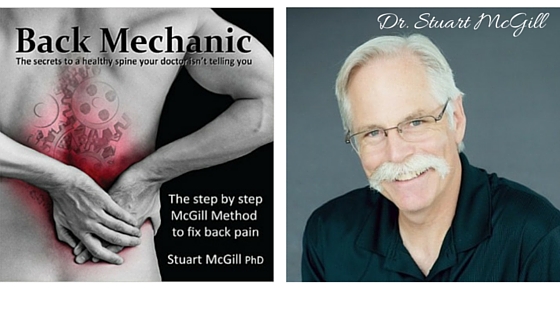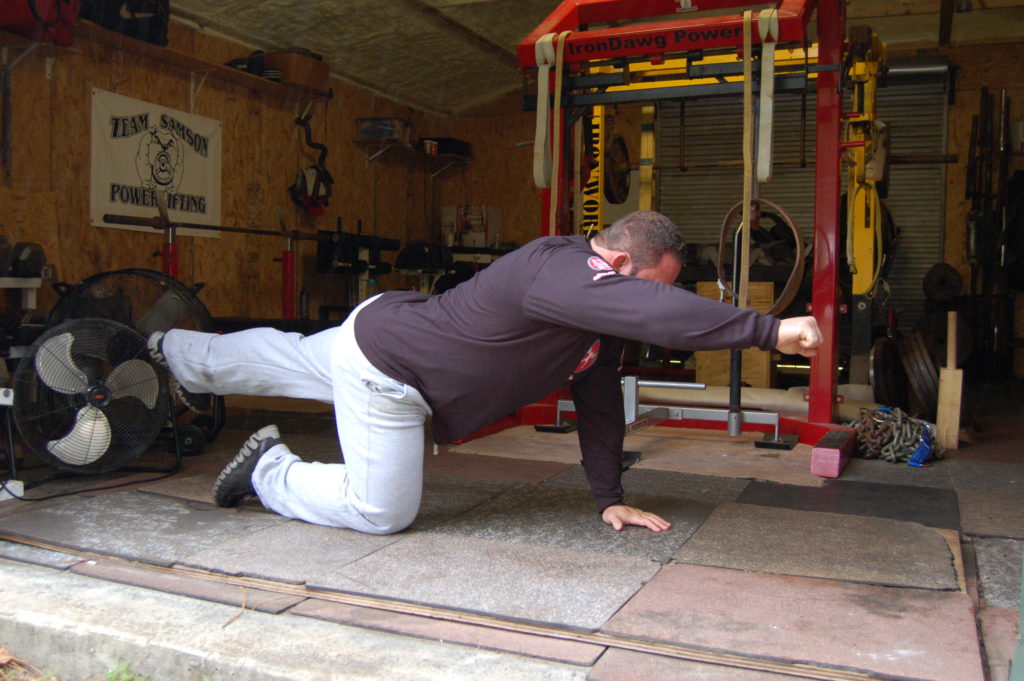
10 Apr Bulletproof Your Back: 10/20/Life For Back Health
By Brian Carroll
Everyone has back issues. Everywhere you turn, someone wants to tell you about his or her bad back, and how it’s preventing them from performing the way they want to perform. Just about everyone will have a back issue at some point, too. It’s almost inevitable. I’m living proof.
In my case, it took working with Dr. Stuart McGill, the world’s preeminent lower back specialist, to learn what I’ve been doing wrong, pretty much for my entire life. Because of Dr. McGill, I’ve turned around my career, and I’ve preempted what seemed, at the time, like a lifetime of pain in front of me.
If you’re experiencing back pain, you need to check out Dr. McGill and his work. His books, Ultimate Back Fitness and Performance, and Back Mechanic are both incredible resources for anyone with back issues. Dr. McGill and I will also be co-authoring a book later this year where we outline a world-class plan for back health and performance. This book should be done late 2016.
In the ten months I spent working my way back to putting 1100 pounds on my back and squatting it, I learned a few major concepts that can help you prevent injury. These include both things you can do proactively, and things you shouldn’t be doing under any circumstances.
1. USE THE LIFTER’S WEDGE: There’s another name for this one: The Gorilla Lean. Lock your back in, use your lats to solidify your back, and brace your abdomen as though someone is about to punch you in the stomach. This is the setup you should be using for rows, squats, bench pressing, deadlifting, and anything else that could potentially be putting your back at risk.
The lifter’s wedge is executed with a neutral spine, with your chest up and your head angled toward the point where the wall and the ceiling meet. Before my injuries, I wasn’t doing this, and I was constantly complaining about my back—and the fact that I was getting weaker. Unfortunately, I’d developed the habit of only wedging properly when my back hurt. Do yourself a favor and don’t wait for your body to yell at you to do the right thing.
2. DO YOUR CORE WORK: Notice here that I’m not telling you to do “ab work.” I go into great detail in 10/20/Life about how you need to strengthen your core without going ballistic with sit-ups and crunches. I’m not going to sit here and debate the efficacy of these moves, but I can tell you from experience that they made my back hurt like hell for days on end. I can also say the same about swinging violently on the reverse hyper and hyperextension machines. I did that for years, always wondering why my back felt worse afterward.
Instead, I used stir the pot, rolling planks, suitcase carries, bird dogs, McGill crunches, and kettlebell swings to go from being in pain every day and not lifting to squatting 1100 pounds again without pain.
Do your core work every day, and get better. Even if you’re just doing five minutes of kettlebell swings or planks, it all helps. Focus on the right things, avoid crunches and weighted sit-ups, and attack your core as a whole. Again, there’s a ton of detail about all of this in 10/20/Life.
3. LISTEN TO YOUR BODY AND DON’T PUSH IT TOO FAR: As Dr. McGill explains in his book, fatigue is what leads to back injuries. Here, I’m talking specifically about back fatigue. Endurance is what keeps your back healthy, so a neuromuscular contraction like a bird dog—along with planks and holds—is a great movement to bring up your endurance in your back.
It’s important to have some downtime when you habitually train hard, so don’t push things 365 days a year. Take days off from heavy training from time to time, and just go for a walk. Do this first thing in the morning instead of jumping out of bed and complaining about your bad back.
During the earlier parts of my career, I was good about listening to my body—to a certain extent, at least—but I still had a bit of a tough guy attitude in play where I thought I could just force things to happen and overcome whatever pain I was experiencing. With nerve pain, however, there’s more to it than just “manning up.” If you don’t get it treated properly, it’s possible you could be screwing yourself for life. Don’t be reckless. Train hard, but train smart.
4. BE AWARE OF THE POSITIONS YOU’RE IN. This applies to when you’re in and out of the gym, and it applies to your entire day. Take spotting, for example. When you spot other lifters, you need to be braced, using your hips at all times when you’re bending. This is something most people don’t even think about, but you can end up getting hurt when you’re not even the one lifting.
Instead of jerking down and moving erratically, use your hips to “lunge down” when you’re tying your shoes. This can prevent what’s probably the most common way to hurt your back—when you reach for something and randomly twist or sneeze. Just be cognizant of where you are, what you’re doing, and the effect it all will have on your back. Don’t waste your back on movements your hips can perform.
Dr. McGill told me to think of myself as an athlete 24/7, which entails not wasting my athleticism when I’m tying my shoes or taking out the trash. There are 168 hours in a week, and you’re only in the gym for a few of them. Use your time wisely, and remember that your workouts are only a small part of the bigger picture. Your back has a finite amount of use in it over your lifespan, so your best bet is to conserve movement, save yourself some pain, and make your core bulletproof.
Brian Carroll
Latest posts by Brian Carroll (see all)
- Quick Rant: Core Exercises - July 26, 2024
- Physical Therapy Fails for Back Pain - July 25, 2024
- Quick Rant: Physical Therapists - July 19, 2024






Sorry, the comment form is closed at this time.